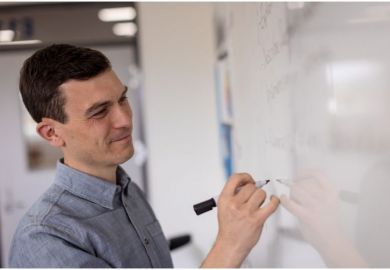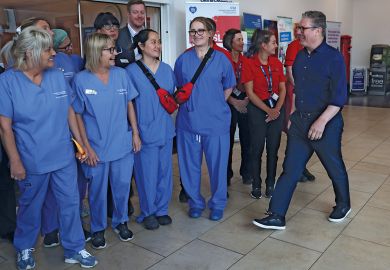Have institutions of higher learning in the United States changed in the last decade? Martin Finkelstein, Robert Seal and Jack Schuster argue that the changing composition of new full-time faculty - people hired between 1988 and 1992 - heralds a significant transformation of academia. The wealth of data provided in this book will be fascinating for anyone who is interested in the changing composition of US faculty. However it is doubtful whether the authors are justified in how they link changes in faculty composition with far-reaching institutional change.
The authors emphasise the diversity of the new academic generation - there are more women, minorities, and foreign-born faculty. This diversity is supposed to generate far-reaching consequences such as a greater emphasis on multicultural curricula. Does the hiring of women and minority scholars ensure such changes? Surely it depends on factors other than personal cultural background of faculty. The data indicate women and minorities work in segregated niches. Half the new women faculty work in community colleges or liberal arts colleges. Minority faculty are often "ghettoised" by discipline. Nearly half of the minority faculty are Asian-Americans who have been hired in engineering, mathematics and natural science departments and may not be in a position to introduce multicultural curricula. Other data in the book show that women and minority faculty often feel they are not treated "as equals", a vivid testimony to their powerlessness.
The authors also emphasise that internationalisation has been proceeding "at a remarkable pace". Yet the numbers show that approximately 17 per cent of the new faculty are foreign born compared to 11 per cent among the senior cohort. The authors link this influx of foreign faculty to the 1990 changes in the US immigration laws.
How then can we think of changes in US academia? Finkelstein, Seal and Schuster provide other data about institution-wide changes. There is a growing number of part-time faculty and people hired in non-tenure track positions. The liberal arts core is shrinking, while law, humanities and health-related disciplines are growing. The change in faculty composition is greater in publicly funded institutions than in private institutions. The authors foreground the comparison between senior and new faculty, but the contours of institutional changes can be deduced from other information they provide. Ultimately, it appears that transformation in academia reflects changes generated by the contradictory demands of the US economic and political system, and, like other occupations, many new faculty are simply forming segregated niches in this profession.
Bandana Purkayastha is assistant professor of sociology/Asian-American studies, University of Connecticut, United States.
The New Academic Generation: A Profession in Transformation
Author - Martin J. Finkelstein, Robert Seal and Jack H. Schuster
ISBN - 0 8018 5886 0
Publisher - Johns Hopkins University Press
Price - £.00
Pages - 236
Register to continue
Why register?
- Registration is free and only takes a moment
- Once registered, you can read 3 articles a month
- Sign up for our newsletter
Subscribe
Or subscribe for unlimited access to:
- Unlimited access to news, views, insights & reviews
- Digital editions
- Digital access to THE’s university and college rankings analysis
Already registered or a current subscriber?



